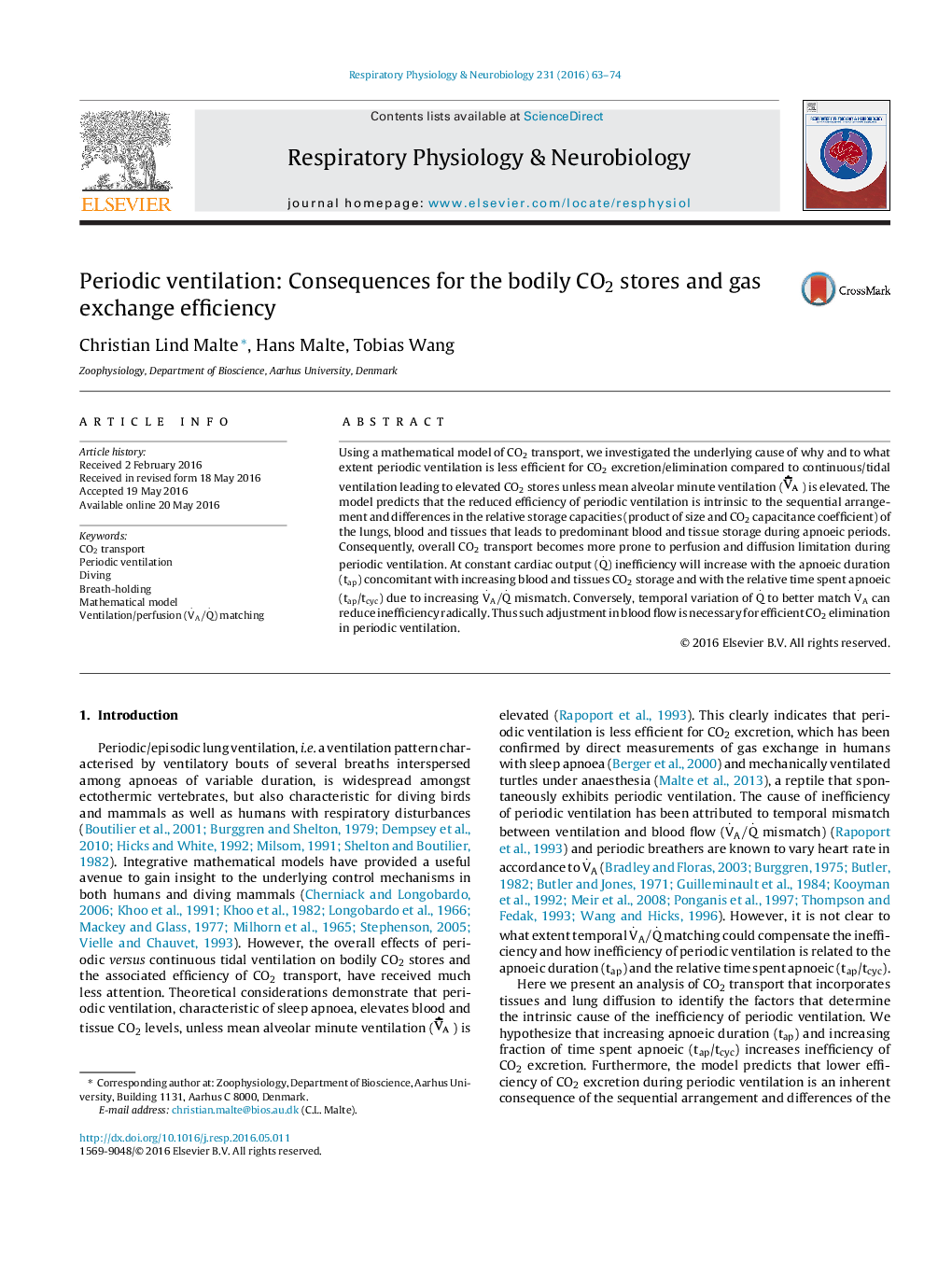| Article ID | Journal | Published Year | Pages | File Type |
|---|---|---|---|---|
| 2846640 | Respiratory Physiology & Neurobiology | 2016 | 12 Pages |
•Periodic ventilation is intrinsically less efficient for CO2 excretion.•Inefficiency is due to the arrangement of the storage capacities of the compartments.•CO2 transport becomes more prone to perfusion and diffusion limitation.•Inefficiency increase with the apnoeic duration and relative time spent apnoeic.•Inefficiency can be compensated by temporal matching of blood flow to ventilation.
Using a mathematical model of CO2 transport, we investigated the underlying cause of why and to what extent periodic ventilation is less efficient for CO2 excretion/elimination compared to continuous/tidal ventilation leading to elevated CO2 stores unless mean alveolar minute ventilation () is elevated. The model predicts that the reduced efficiency of periodic ventilation is intrinsic to the sequential arrangement and differences in the relative storage capacities (product of size and CO2 capacitance coefficient) of the lungs, blood and tissues that leads to predominant blood and tissue storage during apnoeic periods. Consequently, overall CO2 transport becomes more prone to perfusion and diffusion limitation during periodic ventilation. At constant cardiac output (Q.) inefficiency will increase with the apnoeic duration (tap) concomitant with increasing blood and tissues CO2 storage and with the relative time spent apnoeic (tap/tcyc) due to increasing V.A/Q. mismatch. Conversely, temporal variation of Q. to better match V.A can reduce inefficiency radically. Thus such adjustment in blood flow is necessary for efficient CO2 elimination in periodic ventilation.
